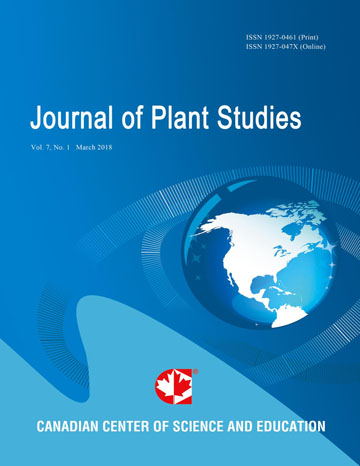Influence of the Leaf Biomass of Piliostigma reticulatum on Sorghum Production in North Sudanian Region of Burkina Faso
- Yelemou Barthelemy
- Yameogo Georges
- Koala Jonas
- Bationo Andre
- Hien Victor
Abstract
In northern Sudan zone of Burkina Faso, soils are increasingly vulnerable to degradation from erosion. Leaf biomass of P. reticulatum, is commonly used by farmers. This study aims (i) to quantify the impact of the leaf biomass of P. reticulatum on the growth and yield of sorghum, (ii) to determine an input composition for better performance and easy adoption by farmers. For three successive years, two different doses of foliar biomass (1.25 t/ha and 2.50 t/ha) were tested in combination and/or in comparison with NPK, Urea and Burkina phosphate. Soil moisture, vegetative growth and yield of sorghum were measured.
At stage 30 and 90 days after sowing, treatments showed no difference in growth. At the stage of 90 days after sowing, treatment.3 (T3) (100 kg NPK 50 kg Urea), T4 (200 kg of Burkina Phosphate), T5 (1.25 t/ha of leaf biomass of P. reticulatum + 100 kg NPK and 50 kg of urea) and T6 (2.50 t/ha of leaf biomass + 100 kg NPK + 50 kg Urea) did not show differences between the treatments. The contribution of the single organic matter gave a higher grain yield than that of the control. T6 gave the highest grain yield out of all treatments (2.40 t/ha). The addition of Burkina phosphate to various doses of dry matter did not influence the grain yield. T3, seems to have a better effect on soil protection and on improvement of grain yield.
- Full Text:
 PDF
PDF
- DOI:10.5539/jps.v3n1p80
Index
- AGRICOLA
- CAB Abstracts
- CABI
- CAS (American Chemical Society)
- CNKI Scholar
- Elektronische Zeitschriftenbibliothek (EZB)
- Excellence in Research for Australia (ERA)
- Google Scholar
- JournalTOCs
- Mendeley
- Open policy finder
- Scilit
- Standard Periodical Directory
- Technische Informationsbibliothek (TIB)
- WorldCat
Contact
- Joan LeeEditorial Assistant
- jps@ccsenet.org
